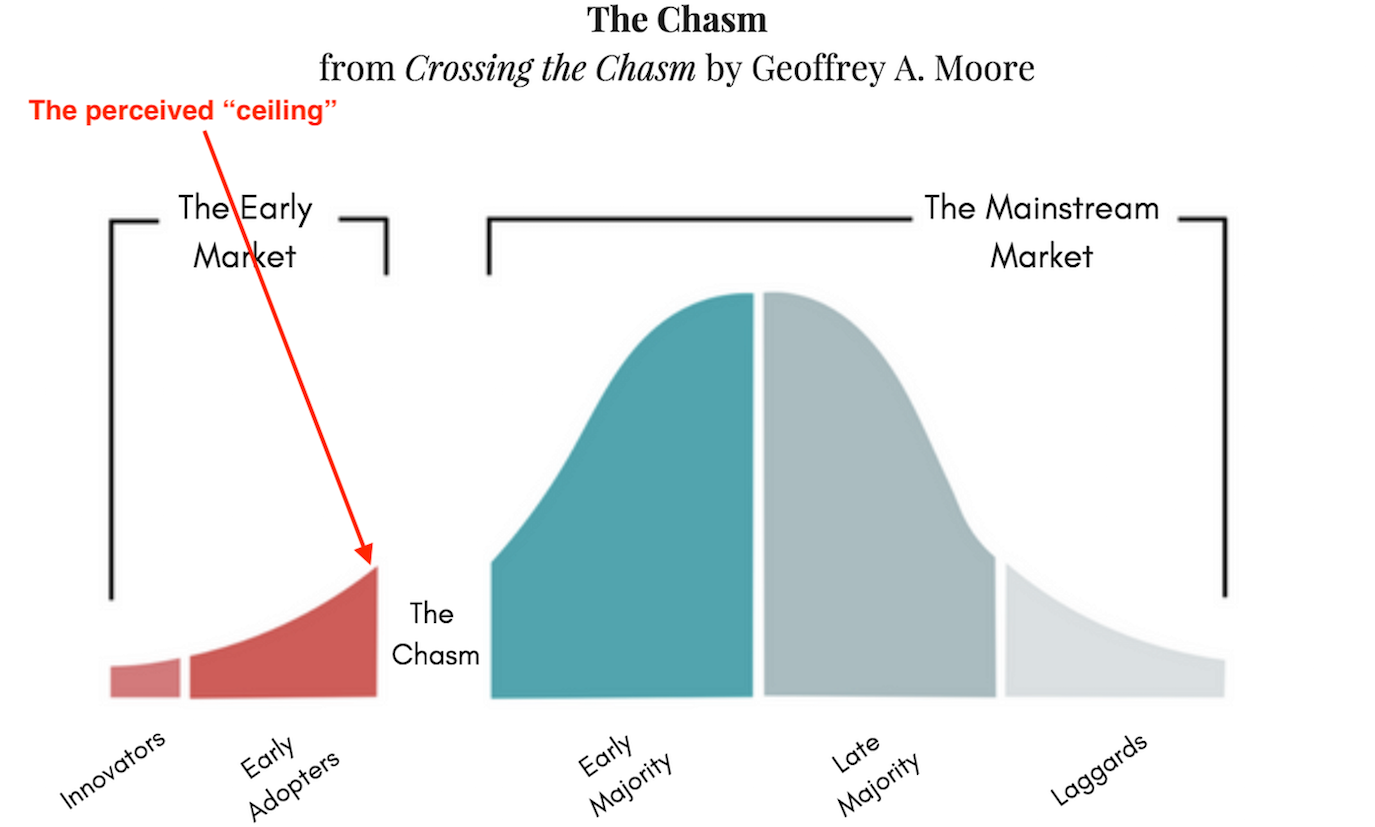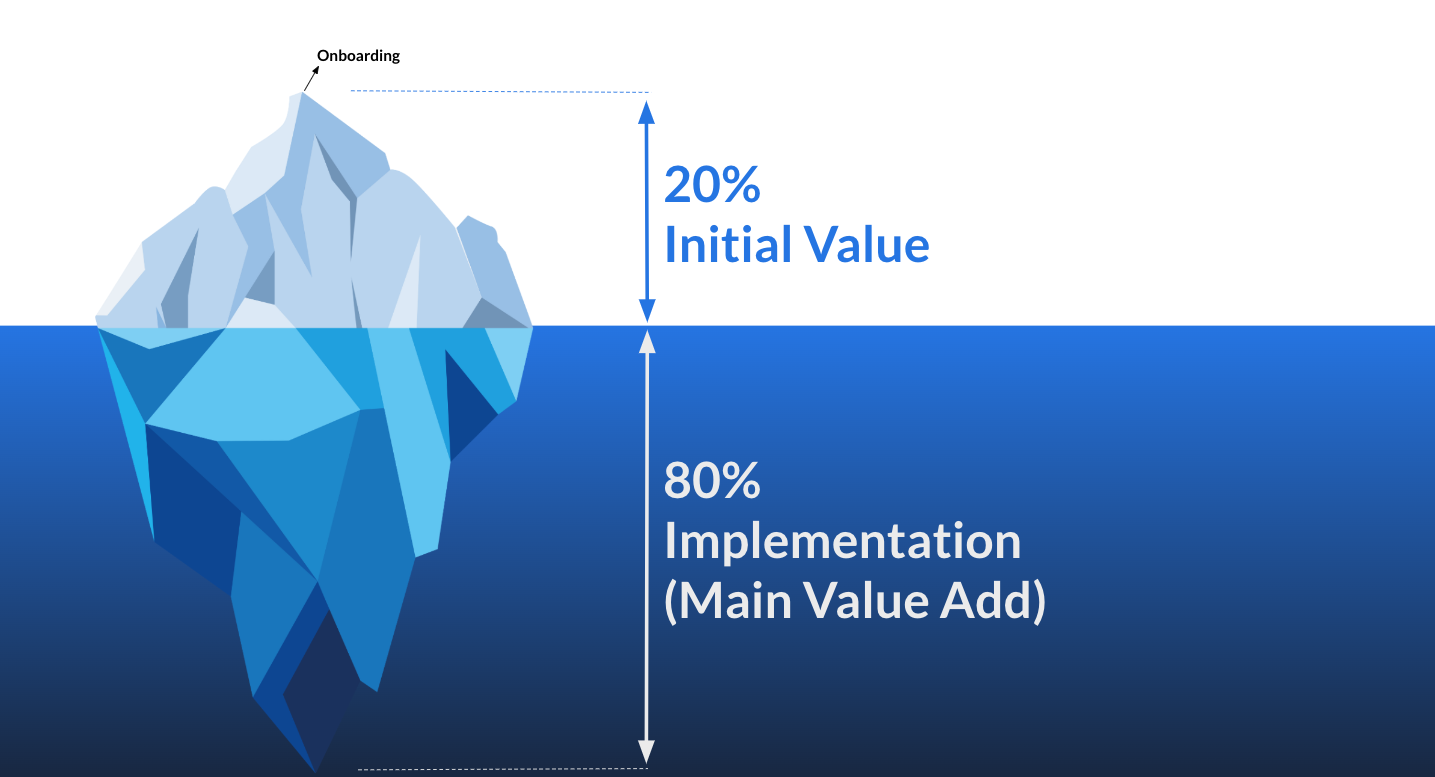
There’s a growing narrative that suggests the construction technology is hitting a ceiling in its adoption curve. This view, however, overlooks a crucial aspect of the industry’s journey, argues Angelos Nicolaou.
We are not approaching a limit, rather, we are transitioning from an early adoption phase into a more mature phase of integration and utilisation. This is not unique to construction technology.
But there is indeed a problem.
Construction technology became mainstream around 2018, which marked the start of widespread customer awareness. Even then, most customers we visited in Europe (mid-market contractors and developers) had never heard of, or seen, construction technologies. The majority of clients were familiar with basic tools like AutoCAD and Aconex, but had little exposure to the vast capabilities of construction technology.
Stagnation not a ceiling
The perceived plateau in construction technology adoption is misleading. It’s not a ceiling, but rather the end of one phase and the beginning of another, a phenomenon well-described in Geoffrey Moore’s Crossing the Chasm. Moore’s work explains how technology markets evolve from early adopters to the mainstream. In the case of construction technology adoption, we are transitioning from initial excitement to a more deliberate and strategic phase of technology integration.

In the construction industry, the initial wave of enthusiasm for new technologies has subsided, giving way to a more pragmatic phase focused on effective implementation. This transition is marked by a growing awareness of the need for proper implementation strategies, underscored by comprehensive training and the embedding of tech-enabled workflows into everyday practices. The realisation has dawned that acquiring state-of-the-art tools is only a fraction of the journey.
The key challenge here is ensuring that these tools are not only implemented, but that they also evolve and are embedded into tech-enabled workflows, with a strong emphasis on comprehensive training for all stakeholders. It’s a process that calls for a strategic approach, ensuring that the workforce is adept at using these technologies in a way that enhances overall productivity and project outcomes.
Even with successful implementation, a significant challenge remains: knowledge retention. Often the deep expertise in using these technologies is held by a few individuals, and their departure can lead to a substantial loss of operational know-how. Addressing this issue of knowledge retention is crucial, but it’s a complex discussion for another time. This aspect is pivotal in ensuring that the value of technology investments is not only maintained, but also continuously leveraged for innovation and growth within the industry.
Onboarding is only the tip of the iceberg

The SaaS vendor implementation service in the construction technology space primarily focuses on onboarding users onto their platforms. However, there’s a noticeable shortfall in the level of implementation support offered to construction companies. Vendors leave the intricacies of integrating their technologies into the complex workflows of construction projects largely unaddressed.
This leaves construction companies with the challenging task of adapting these technologies to their unique workflows and operational needs. Overcoming this challenge is crucial for construction firms to fully benefit from their technological investments and for the construction technology sector to realise its potential in transforming the industry.

“A compelling strategy emerges: focusing on the optimisation of existing technological tools rather than investing in new ones.”
Shifting focus to implementation
Thus, a compelling strategy emerges: focusing on the optimisation of existing technological tools rather than investing in new ones. This approach isn’t about reducing technology spending: it’s about investing more wisely.
The untapped potential in the technologies already at hand offers a significant opportunity. It’s not just about cost saving, it’s about enhancing the value of current investments. The conventional response to budget cuts might lean towards reducing technology acquisitions, but this can also be a moment to delve deeper into the capabilities of what’s already available.
This period could be an ideal opportunity for the industry to reassess its technology strategy. Rather than pausing progress, it’s about finding more efficient and innovative ways to use the existing technological framework. This approach isn’t about halting advancement, but about evolving with a focus on efficiency and innovation within the existing technology ecosystem.
Taking for a fact that the only possible way for construction to progress is through technology, and the fact that adoption both remains low and benefits unrealised, what seems like a ceiling is merely an opportunity to enter a new and more exciting phase of construction technology.
Don’t miss out on BIM and digital construction news: sign up to receive the BIMplus newsletter.











